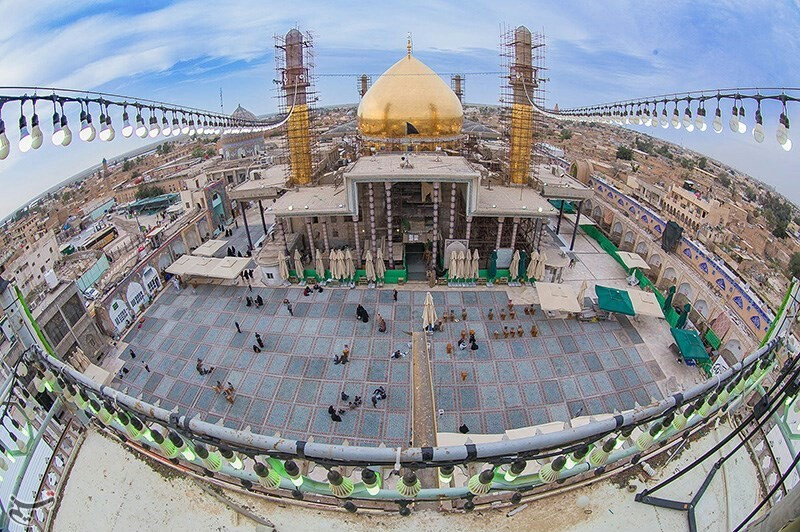Al-Askari Shrine (Temple) AKA مَرْقَد ٱلْإِمَامَيْن عَلِيّ ٱلْهَادِي وَٱلْحَسَن ٱلْعَسْكَرِيّ

Al-Askari Shrine
848 AD
AKA مَرْقَد ٱلْإِمَامَيْن عَلِيّ ٱلْهَادِي وَٱلْحَسَن ٱلْعَسْكَرِيّ
A Shia Muslim mosque and mausoleum in the Iraqi city of Samarra 125 km (78 mi) from Baghdad. It is one of the most important Shia shrines in the world.
The 10th and 11th Shī'ite Imams, 'Alī al-Hādī ("an-Naqī") and his son Hasan al-'Askarī, known as al-'Askariyyayn ("the two 'Askarīs"), are buried in the shrine.
Housed in the mosque are also the tombs of Hakimah Khātūn, sister of 'Alī al-Hādī; and Narjis Khātūn, the mother of Muħammad al-Mahdī.
Adjacent to the mosque is another domed commemorative building, the Serdab ("cistern"), built over the cistern where the Twelfth Imam, Muħammad al-Mahdī, first entered the Minor Occultation or "hidden from the view"—whence the other title of the Mahdi, the Hidden Imam.
References








